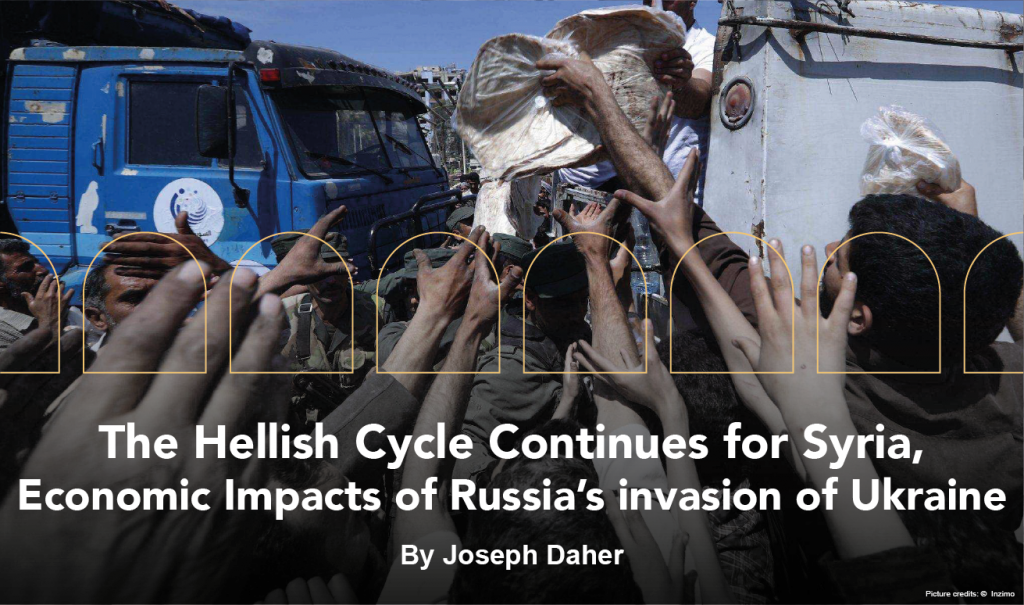
MEDirections is delighted to share a new Blog Post from the Wartime and Post-Conflict in Syria project (WPCS).
Russia’s invasion of Ukraine in late February 2022 is probably the most significant historical event since the US and British led invasion and occupation of Iraq in 2003 regarding its worldwide consequences. In addition to its catastrophic humanitarian impact in Eastern Europe, the war in Ukraine is already having a wide impact on the global economy, especially in commodity markets, with the prices of oil and gas escalating rapidly. Russia and Ukraine provide almost a third of the world’s wheat exports and over 70% of all sunflower oil export as well as 20% for corn, 26.6% of barely and 11% for oil, while Russia is one of the world’s most significant suppliers of fertilizer and related raw materials such as sulphur. Since the invasion, ports on the Black Sea have nearly ceased all forms of commercial activity resulting in historic rise of wheat prices, surpassing levels witnessed during the global food crisis of 2007-08. Both countries have also temporarily banned wheat exports. According to a study published by the OECD in March 2022, “the moves in commodity prices and financial markets seen since the outbreak of the war could, if sustained, reduce global GDP growth by over 1% in the first year, with a deep recession in Russia, and push up global consumer price inflation by approximately 2,5%”.
Syria is not isolated from these global dynamics and Russia’s economic weakening. Although Russian has not acted as a financial backer of Damascus, the economic dependency of the Syria regime towards Russia has increased following Russia’s military intervention in Syria in 2015.
[…]



